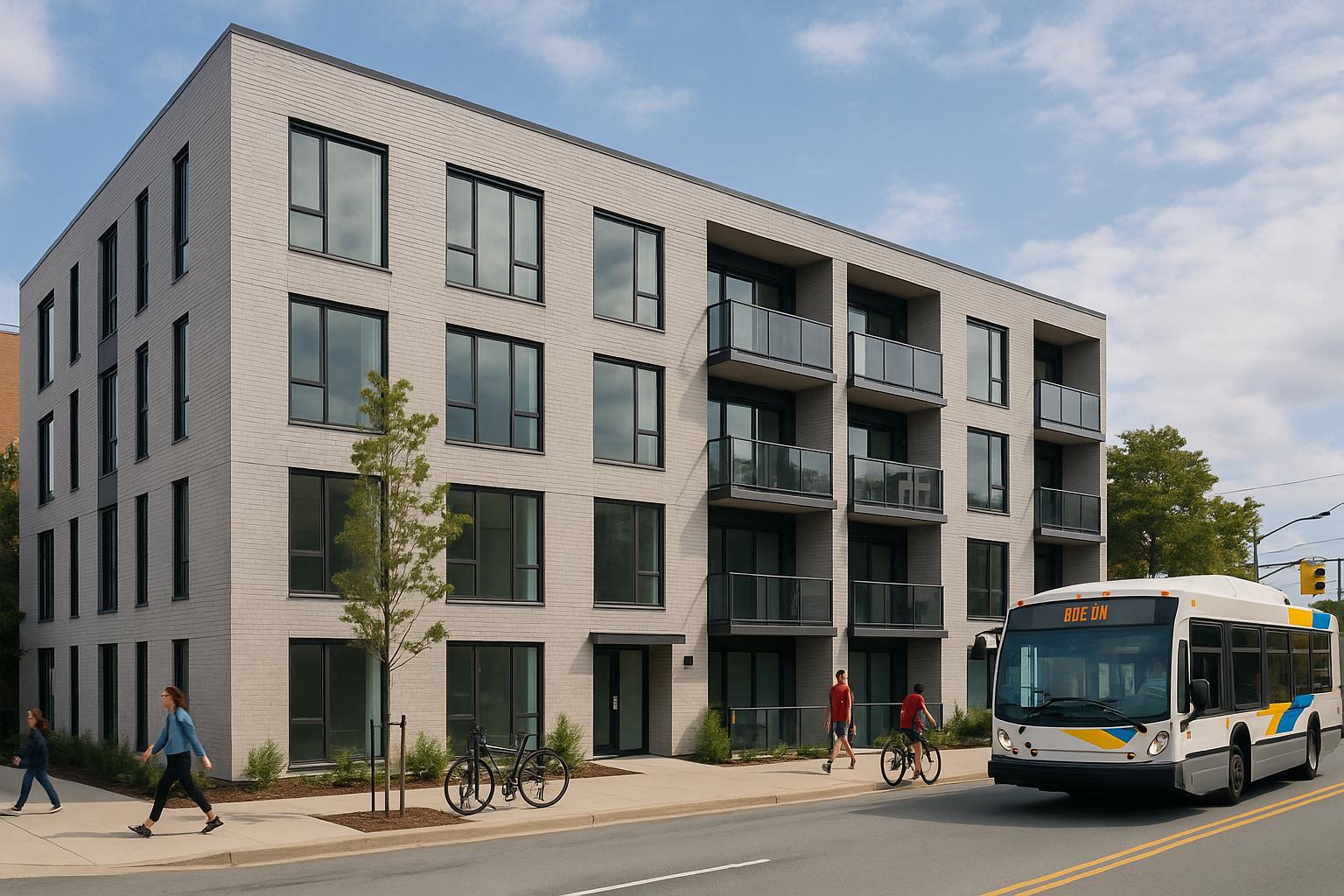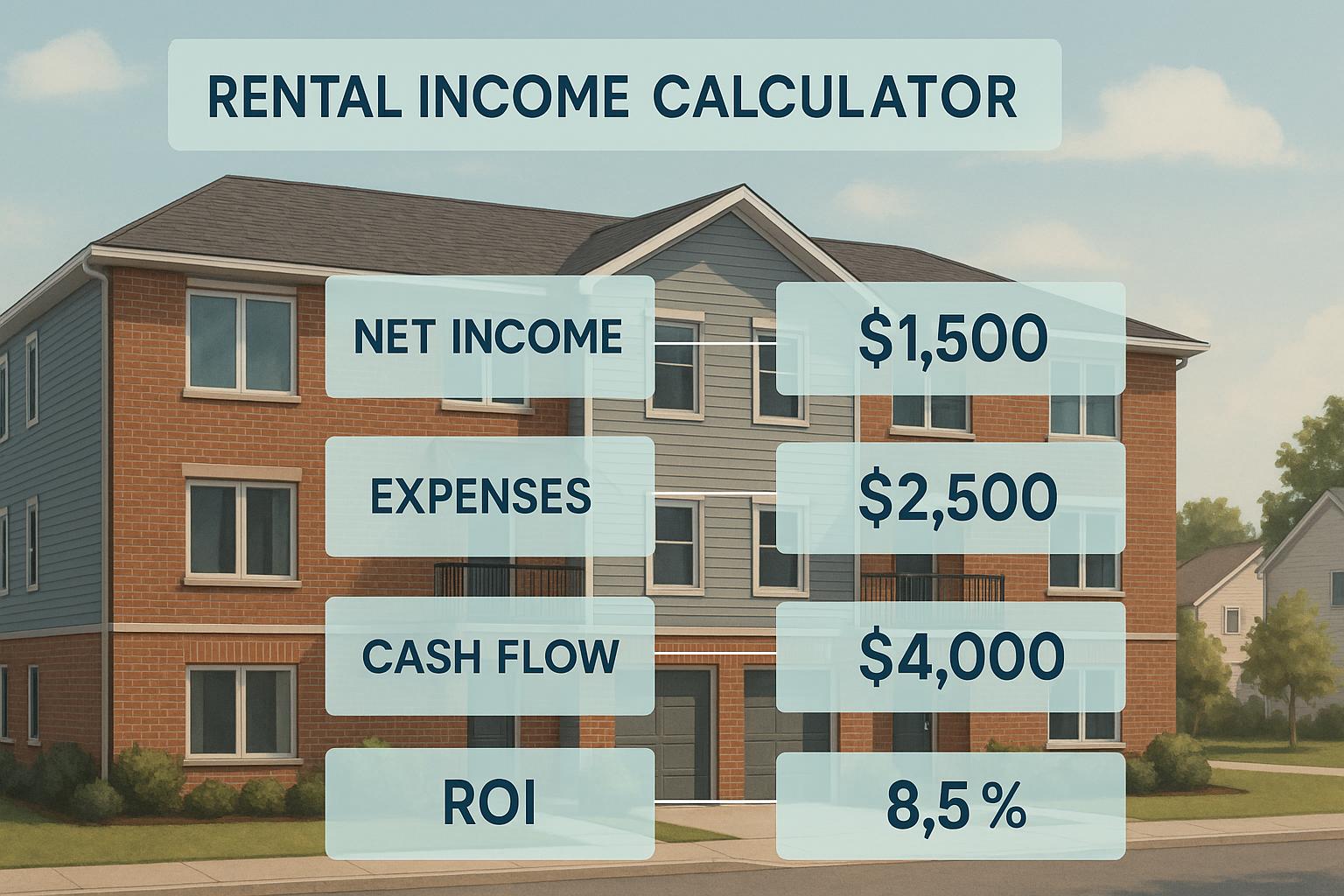In Nova Scotia, heating costs during winter can be overwhelming. Passive solar design offers a practical way to lower those bills while keeping homes warm and inviting. By using smart building orientation, energy-efficient windows, thermal mass materials, and high-quality insulation, you can reduce energy consumption and create comfortable living spaces. Here’s how:
- South-facing orientation: Maximize sunlight exposure during short winter days.
- Efficient windows: Use south-facing glass to let in sunlight and minimize heat loss.
- Thermal mass: Materials like concrete and masonry absorb and release heat to maintain indoor warmth.
- Insulation and air sealing: Keep solar heat inside with proper insulation and airtight construction.
These strategies not only cut energy costs but also make rental properties more appealing to tenants, improving long-term returns. Whether you own multi-unit buildings or single-family homes, passive solar design is a smart investment for Nova Scotia’s cold climate.
5 Essential TIPS For Passive Home Design
Building Placement and Site Orientation
Positioning a building to harness winter sunlight can significantly reduce heating costs. Let’s delve into how thoughtful orientation and site planning can work hand in hand to enhance passive solar gain.
Best Building Orientation for Nova Scotia's Climate
In Nova Scotia, positioning a building to face south is ideal for maximizing winter sunlight. As Solar Ascent explains:
In Nova Scotia, south-facing roofs are ideal. That's where the sun shines most during the day [1].
If a full south-facing orientation isn’t possible, a southwest-facing position can still provide substantial solar benefits.
Site Planning for Maximum Solar Access
To make the most of solar energy, it’s crucial to minimize shading. This means reducing obstructions like nearby trees or buildings that could block sunlight [1][2].
Window Design and Placement
Once the site orientation is optimized, the next step is crafting a thoughtful window strategy. Windows play a crucial role in letting in winter sunlight and keeping indoor temperatures comfortable.
South-Facing Windows: Size and Specifications
Focus on installing energy-efficient south-facing windows. These windows are key to capturing the warmth of winter sunlight while keeping heat loss to a minimum.
Window Placement for Light and Heat Balance
Careful window placement is essential. South-facing windows should be the primary source of winter sunlight, while windows on other sides of the building can be positioned to ensure a good balance of daylight without causing overheating.
Preventing Summer Overheating with Shading
To avoid overheating in the summer, consider shading solutions like overhangs. These are designed to block the sun's high-angle rays during the warmer months but still allow the lower-angle winter sunlight to enter comfortably [3][4].
Using Thermal Mass for Heat Storage
After optimizing window placement, the next logical step is figuring out how to capture and store solar heat. This is where thermal mass comes into play. Thermal mass materials soak up heat during sunny stretches and release it when the temperature dips, helping your multi-unit building stay cozy during Nova Scotia's chilly evenings and cloudy days.
Choosing the Right Thermal Mass Materials
Concrete floors are excellent for thermal storage. They absorb heat from sunlight during the day and radiate it back when it gets cooler. The thicker the concrete, the better it performs.
Masonry walls also work well, especially when they’re protected from outdoor temperature changes. Place them where they’ll get direct sunlight from south-facing windows for the best results.
Tile finishes and stone accents on top of concrete not only enhance heat storage but also add a stylish touch. These are particularly effective in high-traffic areas like kitchens and bathrooms.
Distributing Heat Effectively in Multi-Unit Buildings
To get the most out of thermal mass, you need efficient heat distribution. Open floor plans, interior windows, and ceiling fans are great tools for this. Interior windows allow warm air to move between sunlit and cooler rooms, while ceiling fans help circulate the heat evenly throughout the units.
Thermal mass doesn’t replace modern heating systems but works alongside them. It reduces the demand on heat pumps and radiant floor heating during sunny days, making your building more energy-efficient.
This approach is especially valuable during Nova Scotia's transitional seasons - late fall and early spring - when thermal mass can maintain a comfortable indoor climate with minimal extra heating. By integrating these strategies, you’ll not only cut energy costs but also increase the return on investment in Nova Scotia’s rental market.
sbb-itb-16b8a48
Insulation and Air Sealing: Keeping Solar Heat Inside
Capturing solar heat is only part of the equation; holding onto it is just as important. In Nova Scotia, where winters can be harsh, proper insulation and airtight construction are essential for making passive solar designs effective. High-performance insulation plays a key role in keeping that hard-earned solar warmth inside.
Insulation Requirements for Nova Scotia's Climate
Nova Scotia's winters demand more than just meeting the insulation standards outlined in the National Building Code for multi-unit buildings. To truly retain heat, you'll need to go beyond the basics. Enhancing wall insulation with deeper cavities and adding continuous exterior insulation can significantly reduce thermal bridging, helping to conserve more heat.
For roofs, consider using blown-in cellulose, fibreglass, or spray foam insulation. These materials not only reduce heat loss but also help prevent ice dams from forming during the colder months.
Don't overlook foundation and slab insulation - it’s often forgotten but incredibly important. Insulating basement walls and adding a layer of rigid foam beneath concrete slabs can keep stored solar heat from escaping into the ground.
To eliminate heat loss entirely, wrap the entire building envelope with continuous insulation. This creates a seamless barrier, leaving no room for heat to escape.
Air Sealing to Stop Heat Loss
Insulation alone isn't enough if air leaks let warm air escape. A tight building envelope is crucial for effective passive solar design. Conduct blower door testing during construction to pinpoint and seal leaks before they become a problem.
Focus on sealing common trouble spots like rim joists, electrical penetrations, plumbing chases, and window rough openings. Materials like spray foam, acoustical sealant, or specialized tapes are excellent for these areas.
For windows and doors, use expanding foam to fill gaps and integrate a continuous air barrier into the wall system. This ensures that warm air stays inside where it belongs. In cold climates like Nova Scotia, it’s best to place the vapour barrier on the interior (the warm side of the insulation) and use an exterior air barrier, such as house wrap, to further reduce heat loss.
Don’t forget about electrical and plumbing penetrations. Airtight electrical boxes and properly sealed wire or pipe penetrations are small details that make a big difference in maintaining a secure building envelope.
When done right, combining proper insulation with meticulous air sealing can drastically cut heating costs and eliminate drafts. This approach not only complements passive solar strategies but also creates energy-efficient rental units that are warm, comfortable, and more affordable to heat during Nova Scotia’s long winters.
Financial Benefits of Passive Solar Design for Property Owners
Beyond the energy savings achieved through thoughtful design, passive solar integration offers a solid financial edge. While incorporating passive solar features may slightly increase initial construction costs, the long-term benefits far outweigh these expenses. Lower energy bills and higher property values make this investment a smart financial decision.
Balancing Construction Costs with Annual Savings
Adding passive solar elements - like strategically placed south-facing windows, better insulation, and materials that store and release heat efficiently - can lead to a modest rise in upfront construction costs. However, these features significantly reduce heating needs by improving the building's ability to capture and retain solar heat. Over time, the savings on energy bills not only offset the initial costs but also enhance the property's overall market value.
Boosting ROI with Energy-Efficient Rentals
Rental properties designed with passive solar features often stand out in the market. Units that are energy-efficient, naturally well-lit, and comfortably warm tend to attract higher rents and experience fewer vacancies. Tenants appreciate lower utility bills and the added comfort, which translates into improved cash flow for property owners. Over the long term, this combination of reduced operating costs and increased rental income strengthens the property's return on investment.
Conclusion: Creating Comfortable, Efficient, and Profitable Rentals in Nova Scotia
Passive solar design has the power to turn multi-unit rental properties in Nova Scotia from energy-draining challenges into cost-effective, appealing spaces. By aligning with the province's natural sunlight patterns and working with, rather than against, the Atlantic climate, property owners can create buildings that naturally capture and retain heat during the day and keep that warmth through the chilly Maritime nights. These thoughtful design choices not only boost comfort but also pave the way for long-term financial benefits.
Key elements like south-facing windows, thermal mass materials, and proper insulation significantly lower heating costs while making units more attractive to tenants. These features require minimal additional investment but deliver savings for years to come. Bright, energy-conscious spaces not only reduce tenant turnover but also justify higher rental rates.
Energy-efficient rentals improve cash flow by cutting operational costs and increasing rental income. Tenants are often willing to pay more for comfortable units with reasonable heating expenses, making these properties a win-win for both landlords and renters.
Nova Scotia’s plentiful winter sunshine, when used effectively, becomes a dependable resource. From site orientation to insulation, every aspect of passive solar design plays a role in maximizing the potential of rental properties. Instead of seeing the province's climate as a hurdle, passive solar design transforms it into an advantage that keeps properties profitable year after year.
Designing with the sun in mind is not only environmentally responsible but also a smart financial move, offering steady returns from the moment your property is ready.
FAQs
What are some simple ways to add passive solar design features to my existing home in Nova Scotia without major renovations?
To make the most of passive solar design in your home without diving into major renovations, consider a few simple yet impactful adjustments. Start by maximizing sunlight exposure. If possible, add or expand south-facing windows, as they catch the most sunlight throughout the day.
Another great tip is to introduce thermal mass materials like stone or concrete into your interiors. These materials naturally absorb and store heat from sunlight, which can help regulate your home's temperature. Think about adding features like stone floors or concrete accents for a practical and stylish solution.
You can also opt for lighter-coloured window treatments. These let sunlight filter in while still offering privacy. Lastly, check for any outdoor obstructions, like trees or nearby structures, that might block sunlight from reaching your windows. Trimming back branches or repositioning outdoor items can make a noticeable difference.
These straightforward changes can help you boost energy efficiency and comfort, especially in Nova Scotia’s climate, all without needing to overhaul your home.
What are the best affordable materials to improve thermal mass in small rental properties?
Concrete, bricks, and tiles are practical and budget-friendly materials for improving thermal mass in small rental properties. These materials are great at absorbing, storing, and releasing heat, which helps to keep indoor spaces comfortable while cutting down on heating expenses.
Their long-lasting nature and easy availability make them smart options for property owners in Canada. This is especially true in places like Nova Scotia, where managing temperature swings is crucial for energy savings and ensuring tenants feel at ease.
How can passive solar design improve the value and appeal of rental properties in Nova Scotia?
Passive solar design can make rental properties in Nova Scotia both more attractive and cost-effective. By cutting down energy expenses and boosting energy efficiency, these homes naturally appeal to tenants looking for lower utility bills and eco-friendly living spaces. In a competitive rental market, such features can set a property apart.
Elements like well-placed windows and heat-retaining materials highlight a property’s modern and environmentally aware design. This aligns with Nova Scotia’s renewable energy objectives while giving property owners the chance to charge higher rents and enjoy a better return on investment (ROI).



